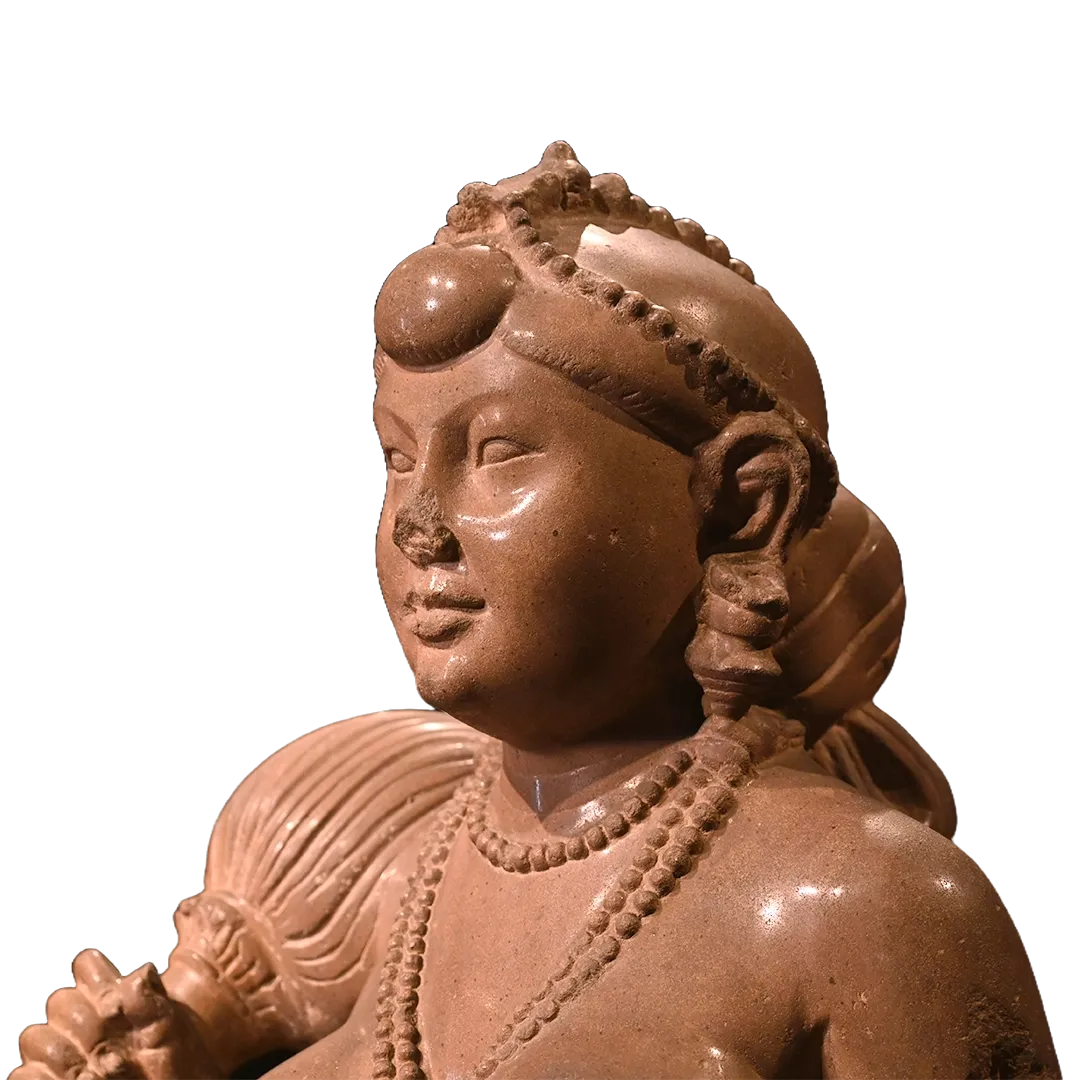


A confluence of royalty, culture and learning, the Didar Ganj Yakshi epitomises the beauty of classical Indian sculpture. 5 feet, 2 inches tall, this statue made of Chunar sandstone was discovered in 1917, the same year as the official establishment of the Patna Museum. In a letter to the Honorable E.H.S. Walsh who was then the Commissioner of Patna, the credit for the discovery of the statue was given to a Ghulam Rasul, who happened upon it on the muddy banks of the Ganges at Didarganj in Patna, Bihar. It is believed that what he saw was the base of the statue, which on further discovery, led to finding the magnificent sculpture entombed in the muddy depths of the bank. However, a more popular if somewhat romantic tale of the discovery of the Yakshi is one which ties back to a confidential report filed by a police inspector on 20th October, 1917. The report mentions a slab sticking out of the Earth on the banks of the Ganges in Didarganj on which the dhobis or washer men would often wash their clothes. One day a snake appeared on the bank and as the villagers tried to chase it away it slithered down a hole near the slab. They began to dig around the area, a result of which was the serendipitous discovery of the Didarganj Yakshi. It has now found a permanent home in the Bihar Museum and epitomizes not just the aesthetic beauty of Indian sculpture but gives us an insightful reading of the feminine power in India.
The Yakshi, depicted holding a chauri, or fly-whisk in her hand, embodies the ultimate feminine beauty of pre-modern India. Her figure is voluptuous with a full bust, slender at the waist and wide at the hips. Perhaps, what is also striking about the statue is the endearing grace of her posture and demeanour. The Yakshi stoops slightly forward instead of standing upright, seeking a posture of humility. The smile on her lips is elusive, yet hauntingly sweet, which is why she is referred to as the Mona Lisa of India.